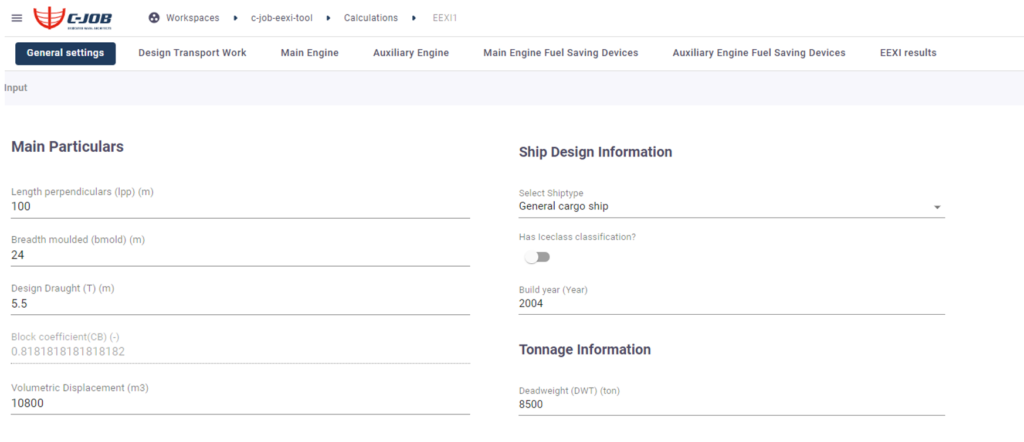To reduce carbon emissions in the maritime industry, the International Maritime Organization has announced a number of measures in recent years. One comes in effect from 1 January 2023 when every ocean-going cargo and passenger ship with a GT of 400 and above must comply with the EEXI requirements. To support our clients, C-Job can calculate the EEXI of your vessel and propose solutions where necessary so that the ship can continue its journey. After the calculations and – if needed – applying any modifications required, C-Job delivers a technical file that should be submitted to the classification society of the vessel.

C-Job EEXI Expert Jan-Sietse de Boer
Why is EEXI important?
The IMO regulation states that every ocean-going cargo and passenger ship with a GT of 400 and above must comply with the EEXI requirements. More specifically all vessels that fall under the MARPOL Annex VI must comply. C-Job EEXI expert Jan-Sietse de Boer says “Every vessel that docks from 1 January 2023 onwards must show they comply with EEXI regulations. It is imperative that ship owners act now to ensure timely EEXI compliance.
“It is therefore important that action is taken this year for all bulk carrier, gas carrier, tanker, container ship, general cargo ship, refrigerated cargo ship, combination carrier, LNG carrier, Ro-Ro cargo ship, Ro-Ro passenger ship, and cruise passenger ship having non-conventional propulsion because they are all subject to the EEXI calculations.”
The file is only required once in a vessel’s lifetime and is based on static ship design values rather than operational values.
How is the Energy Efficiency Existing Ship calculated?
No on-board measurements are required to calculate the index of an existing ship since the EEXI is an index based on static ship design values instead of an operational information. The attained EEXI is calculated by dividing the sum of the emissions of the main and auxiliary engines minus the innovative energy generation devices by the capacity times the reference speed times the reduction factors. Which in a formula is written down as follows:

To make this calculation as easy as possible for our clients, C-Job R&D department developed a web tool. In the web interface the required and attained EEXI can be easily calculated by filling in the details of a vessel. Details required are for example, ship type, the main particulars, deadweight, design speed, delivered engine power (kW), fuel type, specific fuel consumption (g/kwh), shaft generators power take-off, shaft motors, energy and fuel-saving devices.
C-Job will provide support at every step and complete the tool together with ship owners requiring an EEXI technical file.

Non-compliance solutions
According to a recent outlook by Simpson, Spence, and Young, an estimated 25 % of current tankers and bulkers fleet complies with EEXI regulations. In case a vessel does not comply with the new EEXI rules, there are several actions ship owners can take to achieve compliance.
Jan Sietse says “One of the ways to lower an EEXI score is to apply (overridable) Engine Power Limitation (EPL) and start sailing at a lower speed which will significantly reduce the CO2 emissions of the vessel.”
However, there are a multitude of other options available to ship owners including installing fuel-saving devices or energy-generating devices. C-Job is able to provide insights to ship owners which option yields the highest savings compared to the investment required.
Jan Sietse continues “Options can include applying heat waste recovery systems or solar panels to a vessel or apply low friction coating, or install wind-assisted propulsion systems. Thanks to our knowledge we can easily establish which will provide the best solution to our clients”.
“With vessels that previously had energy-saving measures applied but at the time did not have the impact quantified, can also call on C-Job to assist. For example, a CFD simulation will be able to show how much extra speed a low friction coating has resulted in.”
How to get an EEXI technical file for your vessel
Contact our C-Job Sales Team today to get your vessel’s EEXI Technical File or to discuss how to solve any non-compliance issues.


